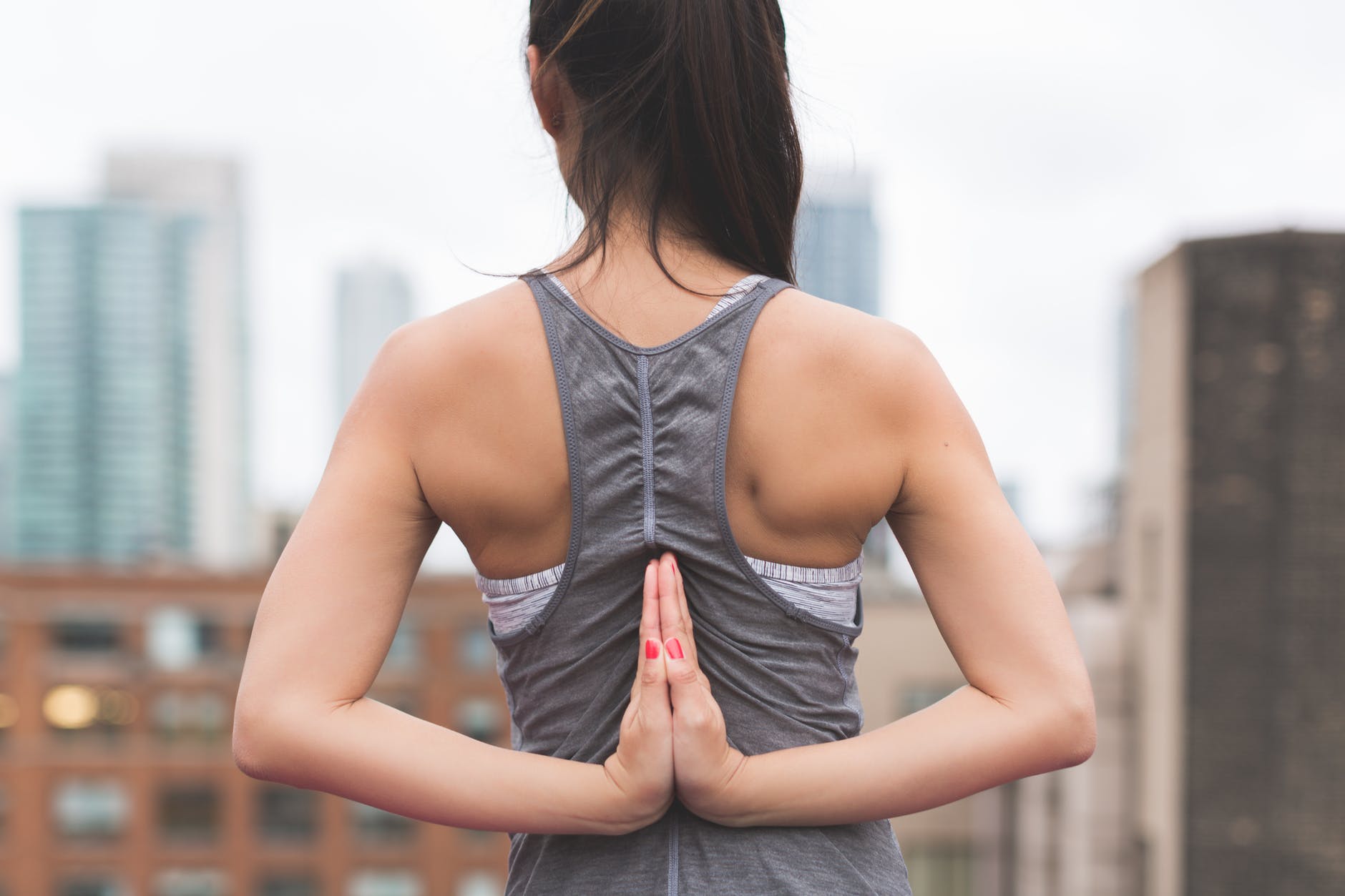Faith-Based Intuitive Training: What It Is and Why It Works
“Come to me, all who weary and are heavy laden, and I will give you rest. Take my yoke upon you and learn from me, for I am gentle and lowly in spirit, and you will find rest for your souls. For my yoke is easy, and my burden is light.” Matthew 11:28-30
Would you rather:
a. See major results after a 30-day workout program and then discover an injury from that routine or
b. Experience subtle positive increases in how you move every day?
The newest trend may be high intensity interval workouts, or massaging your muscles until you get red sores, but is that really what is best for you?
Many programs sell you short-term results with no thought as to what you actually need in your season of life. They do not take into account how you were made, what you enjoy, and how it can benefit your long-term goals as a human being. Don’t let any one program box you in!
"Rather than blindly following a program or jumping on every new fitness fad regardless of its safety or required fitness level, intuitive training caters each workout to what will best suit your current (as in, daily) condition and abilities." —Spunk Fitness
I'm a huge proponent of intuitive training, or learning to tune in to your internal signals instead of abiding by external rules.
Faith-based intuitive training takes it a step further by integrating the spirit with the body for inside-out wholeness: learning to listen to the Lord, understanding how He made you, and walking in step with the Spirit.
Making Exercise Fit Your Life Goals
What's the point of exercising if it's not going to support my daily activities and life goals? Katy Bowman hit the nail on the head when she shared in a podcast about the 2019 fitness trends she would like to see:
"We are trying to nourish the movement required for robust human experiences that occur not only during a bout of exercise, but in daily life. Instead of exercising to check it off, come up with the movement goal that's not about exercise, that includes other people, or a passion of yours. Maybe it's nature or community service, or the environment, or your family. If we consider the law of specificity that you're going to get better at the movements your'e doing, how well are you training for the movements in life? I'd love to see this be on the intake form for all gyms and personal trainers: 'how can I develop a movement program for you that makes movement when you're not exercising more fulfilling?'"
I believe the first step in intuitive training is to figure out your goals. What's important to you?
In Matthew 11:28-30, Jesus invited the people to shake off all the unnecessary man-made rules of the religious authorities of their day and partner up with Him instead. In the same way, Jesus invites us to shrug off the irrelevant expectations of one-size-fits-all fitness and and take His yoke instead.
What is Jesus’s yoke? It is easy, and his burden is light. As I talk about in the Rest and Rise Bible study, that word “easy” means suitable, useful, properly productive, well-fitted, or beneficial. Taking Jesus’s yoke is to take on the fitness that fits you. And who better to guide you than the One who made you?
Let us begin throwing off those plans that do not benefit us and goals which others have imposed upon us.
Fill in the blank:
As Lara Casey asks, "What will be important to you when you're 80?"
When I’m 80, I want to _______
When I’m 80, God wants me to ______
Are your answers the same? Wonderful. Are they different? Let Jesus stand in the gap for you there.
How can a fitness routine support this goal?
Experiment with What Exercise Success Looks Like for You
If you’re just starting your fitness regimen or have been stuck in one mode of fitness and wondering what could work for you in this season, here are a few ideas to get your wheels turning:
Dance / Choreography : Zumba, step aerobics, Pound
Weight lifting: Cross Fit, bodybuilding, Body Pump
Mobility: MoveNat, Yoga, Tai Chi
High intensity: HIIT, Boot camp, Insanity
Team: Boxing, Tennis, Jiu Jitzu, Soccer
When you try something different, ask yourself, “Do I like this? Does this support my goals?”
Instead of worrying about how well we can do, turn each experience into an experiment. Test them out. Try them on. You have been given a spirit of power, love, and self-control. If they don’t fit you right now, walk away and do something else!
Do a Movement Assessment
Once you come up with a plan for how you will move for the day, do a self-assessment.
Every day brings new challenges, and new feelings within our spirit that can also manifest physically. A run that worked for you yesterday might feel sluggish today. You might have some extra stress all bunched up in your shoulders. Excess guilt may be keeping you from pursuing joyful movement.
Praying something like, "Show me You, show me me" helps to open the invitation to allow the Lord into this process. It's not that He's not already there, but this prayer opens our eyes to see Him and ourselves more clearly.
Body Scan
A good way to start this assessment is to lay flat on your back with eyes closed, arms and legs relaxed. Work up from your toes to your head, flexing and releasing, turning and twisting, opening and closing each body part. Notice the sensations. Is there resistance? Consider if there are any rebellious thoughts involved. Freedom? Praise God for His grace. Constriction? Ask the Lord if there are ways you might be shrinking back or held back, and release any striving to His will.
Another method of body scanning is to foam roll. Here you can use outside pressure to test the muscle tightness. If one spot is particularly tense and even painful, give it more tender attention.
Finally, go through the motions of your planned workout. Intuitive training doesn't necessarily mean you don't have any kind of plan. Intuitive training is not simply, "do whatever you feel like doing!" but "determine what you enjoy, what you need, what your body can handle, and do that."
If you have deadlifts on the schedule but found through foam rolling that your hamstrings are particularly tight, consider going lighter than planned and focusing on a deeper stretch at the bottom of the movement. His yoke is easy, and his burden is light! You’re free to switch it up.
Practice Constant Body Feedback, Reassessment, and Redesign
An article on intuitive training mentions how "the late Dr. Mel Siff referred to Intuitive Training as Cybernetic Periodization to reinforce the constant feedback, reassessment and redesign of training as it occurs." The author suggests using the Rate of Perceived Exertion in conjunction with Rate of Technique alongside an exercise program. It’s a structured way of staying sober, awake, and alert throughout our movement.
The Rate of Perceived Exertion is placing your efforts on a scale. You could rate it like a review and give it one-five stars, or optimize it on a scale of 1-10 (1 being "I'm laying in bed, leave me alone" to 10 being "I'm as fast as a Cheetah!...but this is not sustainable").
The Rate of Technique is how effectively you are doing an exercise. In order to do this well, you might need the help of a professional for an initial assessment. At the very least, cut out the distractions and add a mirror or video yourself and play it back for a better reflection.
Rate of technique becomes more important when the risk is higher, such as lifting heavier weights, climbing to greater heights, or swimming longer distances.
If you have a written exercise plan, tack these two on to the end of the row where you have written weight / repetitions / sets / time. If you're doing something more informal like a hike, take mental notes on how hard a hill is on your body and if you are moving yourself in an efficient way to master that obstacle.
Try writing these observations down until the practice becomes an innate habit. This is one way to build up your intuitive training skills!
Practice
Here’s one step you can take today towards intuitive training. Ask yourself,
Today, I want to ______
Today, God wants me to _____
and move accordingly!
RESPOND
Has there been a time where you exercised in a way that wasn’t right for you, but was recommended by somebody else?
Do you do better with a program or “going by feel”?
How do you know to exercise in a way that supports you?
**If you’ve ever heard of intuitive eating, intuitive training makes a great pairing for your health. One of my favorite intuitive eating resources is a book by my friend Aubrey Golbek called, Grace, Food, and Everything in Between: Discover the Transforming Power of Grace to Set You Free from Food and Body Shame.
















